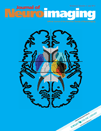Structural and Metabolic Features of Two Different Variants of Multiple Sclerosis: A PET/MRI Study
J Neuroimaging 2013;23:431-436.
Abstract
ABSTRACT
BACKGROUND
Multimodality imaging such as proton magnetic resonance spectroscopy (MRS) and positron emission tomography (PET) have provided information specific to the underlying mechanisms of many brain diseases, including multiple sclerosis (MS).
PURPOSE
To determine the structural and metabolic characterization of two particular variants of MS, namely tumefactive MS and Balo's concentric sclerosis (BCS).
METHODS
Conventional MR imaging, diffusion and perfusion MR, MR spectroscopy and PET imaging with F-18 fluorodeoxyglucose (FDG) and F-18 fluoromethylcholine (FCho) were performed.
RESULTS
In a case with pathologically proven tumefactive MS, magnetic resonance imaging (MRI) showed a pseudotumoral lesion with incomplete ring enhancement, peripheral diffusion restriction, and high choline and lactate peaks on MRS. On follow-up, the lesion showed significant growth. In a case of BCS, MRI showed an onion-like lesion without contrast enhancement or diffusion restriction, and only a moderate increase in choline on MRS. The lesion remained stable on follow-up. On PET, there was no uptake of F-18 FDG in either type of MS lesion. Conversely, uptake of F-18 FCho was moderate in tumefactive MS, whereas no F-18 FCho uptake was noted in the lesion with, on MRI, typical features of BCS.
CONCLUSIONS
Our findings illustrate that metabolic features may differ between variants of MS possibly signifying different disease activity.




